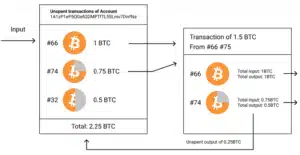Digital Dining Solutions: Choosing the Right Ordering Website for Your Restaurant

In an era where culinary experiences transcend the confines of brick-and-mortar establishments, the digital realm emerges as a gastronomic frontier.
With so many mobile users, restaurant businesses should ensure they have a seat on Google search results pages.
Join us as we show you how to choose the right ordering website for your restaurant to ensure it not only sizzles in the kitchen but also dazzles in the digital realm.
So, step into the dynamic world of dining innovation, where the clinking of cutlery is harmonized with the hum of technology.
Table of Contents
What To Know Before Your Ordering Website Goes Live
Embarking on the journey to launch your restaurant’s ordering website is a thrilling endeavor, but before you hit the “go live” button, there are crucial considerations that can make the difference between a seamless experience and potential pitfalls.
Here’s what you need to know before your ordering website takes center stage:
User-Friendly Interface
Ensure your website is intuitive and user-friendly. A streamlined interface enhances the customer experience, making it easy for patrons to navigate and place orders effortlessly.
Mobile Responsiveness
In the age of smartphones, prioritize mobile responsiveness. Your ordering website should function seamlessly on various devices to cater to customers who prefer ordering on the go.
Comprehensive Menu Presentation
Present your menu clearly with enticing visuals and detailed descriptions. A well-curated menu enhances customer engagement and aids in decision-making.
Integration with POS System
Seamless integration with your Point of Sale (POS) system is crucial. This ensures that online and in-house orders synchronize seamlessly, preventing potential discrepancies.
Accurate Pricing and Policies
Double-check that all pricing information is accurate and reflects applicable taxes or fees. Clearly outline delivery charges, minimum order requirements, and other relevant policies.
Secure Payment Gateway
Prioritize the security of online transactions. Implement a reliable and secure payment gateway to instill trust and confidence in your customers.
Inventory Management
If your restaurant has a dynamic menu with limited quantities of certain items, integrate inventory management to avoid overselling and disappointments.
Delivery Logistics
Define your delivery radius, delivery charges, and expected delivery times clearly. Set realistic expectations to manage customer satisfaction.
Promotions and Discounts
If your restaurant plans to offer promotions or discounts, ensure that your ordering website supports these features. Highlight any ongoing specials prominently.
Customer Support Channels
Establish clear customer support channels. Whether it’s a live chat feature, a dedicated customer support number, or an email address, make sure customers can easily reach out for assistance.
Legal Compliance
Ensure your ordering website complies with local regulations, including food safety standards, licensing requirements, and any specific rules related to online food ordering.
Testing and Quality Assurance
Before going live, rigorously test your ordering website. Check for any glitches, errors, or inconsistencies to ensure a smooth experience for your customers.
By addressing these considerations before your ordering website goes live, you set the stage for a successful digital dining experience.
Steps into Choosing the Right Ordering Website for Your Restaurant
Choosing the right ordering website for your restaurant is a pivotal decision that can significantly impact your digital presence and customer experience. Here are essential steps to guide you through the process:
Define Your Requirements:
Clearly outline your restaurant’s specific needs. Consider factors such as the type of cuisine, the size of your menu, the volume of orders you anticipate, and any unique features you may require.
Understand Your Budget:
Establish a realistic budget for implementing and maintaining an ordering website. Consider both upfront costs and ongoing fees associated with the platform.
Assess User-Friendliness:
Prioritize platforms with an intuitive and user-friendly interface. A seamless customer experience is crucial for increasing online orders and retaining customers.
Mobile Responsiveness:
In the age of mobile devices, choose a platform that is mobile-responsive. Many customers prefer ordering from their smartphones, so the website must function flawlessly on various screen sizes.
Integration Capabilities:
Check for integration capabilities with your existing systems, especially your Point of Sale (POS) system. Seamless integration ensures that online and in-house orders are synchronized.
Customization Options:
Look for a platform that allows customization to reflect your brand accurately. This includes incorporating your restaurant’s logo, color scheme, and overall aesthetic.
Secure Payment Processing:
Prioritize platforms with secure payment processing options. Ensure that customer transactions are protected, and consider offering a variety of payment methods to accommodate different preferences.
Inventory Management:
If your menu includes items with limited availability, opt for a platform that supports inventory management. This feature prevents overselling and disappointment for customers.
Delivery Logistics:
Consider the delivery logistics provided by the platform. Define your delivery radius, set delivery charges, and ensure that the platform can handle your restaurant’s specific delivery requirements.
Promotional Capabilities:
If your restaurant frequently runs promotions or discounts, choose a platform that supports these features. The ability to highlight specials and offer discounts can be a valuable marketing tool.
Customer Support Features:
Assess the customer support features offered by the platform. Look for options like live chat, a customer support hotline, or an email system to address customer inquiries and issues promptly.
Compliance with Local Regulations:
Ensure that the ordering website complies with local regulations related to online food ordering, including food safety standards, licensing requirements, and any specific regulations in your region.
Trial and Testing:
Before committing, explore trial options if available. Conduct thorough testing of the platform to identify any glitches or issues. A trial period allows you to assess the platform’s functionality and compatibility with your restaurant’s operations.
Feedback and Reviews:
Research customer feedback and reviews of the ordering website platform. Insights from other restaurant owners can provide valuable perspectives on the platform’s performance and customer satisfaction.
Scalability:
Consider the scalability of the platform. Choose a solution that can grow with your business, accommodating increased order volume and potential expansions.
Digitizing the Dining Experience: Navigating the Path to the Perfect Ordering Platform
The decision to embrace a digital ordering platform is a strategic leap toward enhancing customer accessibility and boosting your restaurant’s reach.
As we conclude our journey through the essential steps in selecting the right ordering website, it’s evident that this choice extends beyond mere functionality—it’s about curating a seamless and delightful experience for your patrons.
Whether you’re navigating the nuances of user-friendliness, ensuring secure transactions, or contemplating the platform’s scalability, each step contributes to the overall tapestry of your restaurant’s digital presence.
The chosen ordering website is not just a technological addition; it’s an extension of your brand, shaping how customers interact with your culinary offerings in the digital realm.









